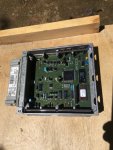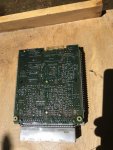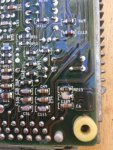Kmcbride3956
Member
- Joined
- Apr 17, 2019
- Messages
- 33
- Reaction score
- 1
- Points
- 8
- Location
- Georgia
- Vehicle Year
- 1988
- Make / Model
- Ford Ranger XLT
- Transmission
- Manual
I thought I should start a new thread on my truck because the one I had started before was about a separate issue. So I have an 88 4 cylinder 5 speed ranger that was given to me because it wasn’t getting spark and the previous owner gave up on it. I had to replace the coil because the tip of it was broken off. After replacing that I started checking the ignition control module and found that it had a bad ground. I fixed the ground but still no spark. I also found a few other wires that were cut or otherwise messed up. The wires going to the MAP were cut so I fixed them, still no spark. Then I found the wire going to the oil pressure sensor was cut. I decided to test this wire by putting my test light on the positive side of the battery and touching the wire with the test light. It didn’t light up, leading me to believe that there is a problem in that wire somewhere. I traced that wire to the large wiring bundle that also connects to the ICM. I then traced all that back to the computer. I took off the passenger side kick panel and found the casing around the computer to be wet. So I pulled the computer and opened it up. It looks dry and I don’t physically see anything wrong in there but I don’t know how to tell just by looking at it. So now I don’t know if I should replace the computer or not. Obviously it’s been getting wet every time it rains, but I don’t know how wet, and if it’s just the case, or if water has gotten inside. The truck seems to have some wiring issues at the very least because I have found 2 different areas that didn’t have continuity. I don’t really know what to do next. Replace the computer? Attempt to trace every single wire? I am not a professional mechanic, and have a limited amount of knowledge when it comes to wiring and electrical components. Any suggestions?
Attachments
-
116.1 KB Views: 111
-
129 KB Views: 132
-
97 KB Views: 125

















